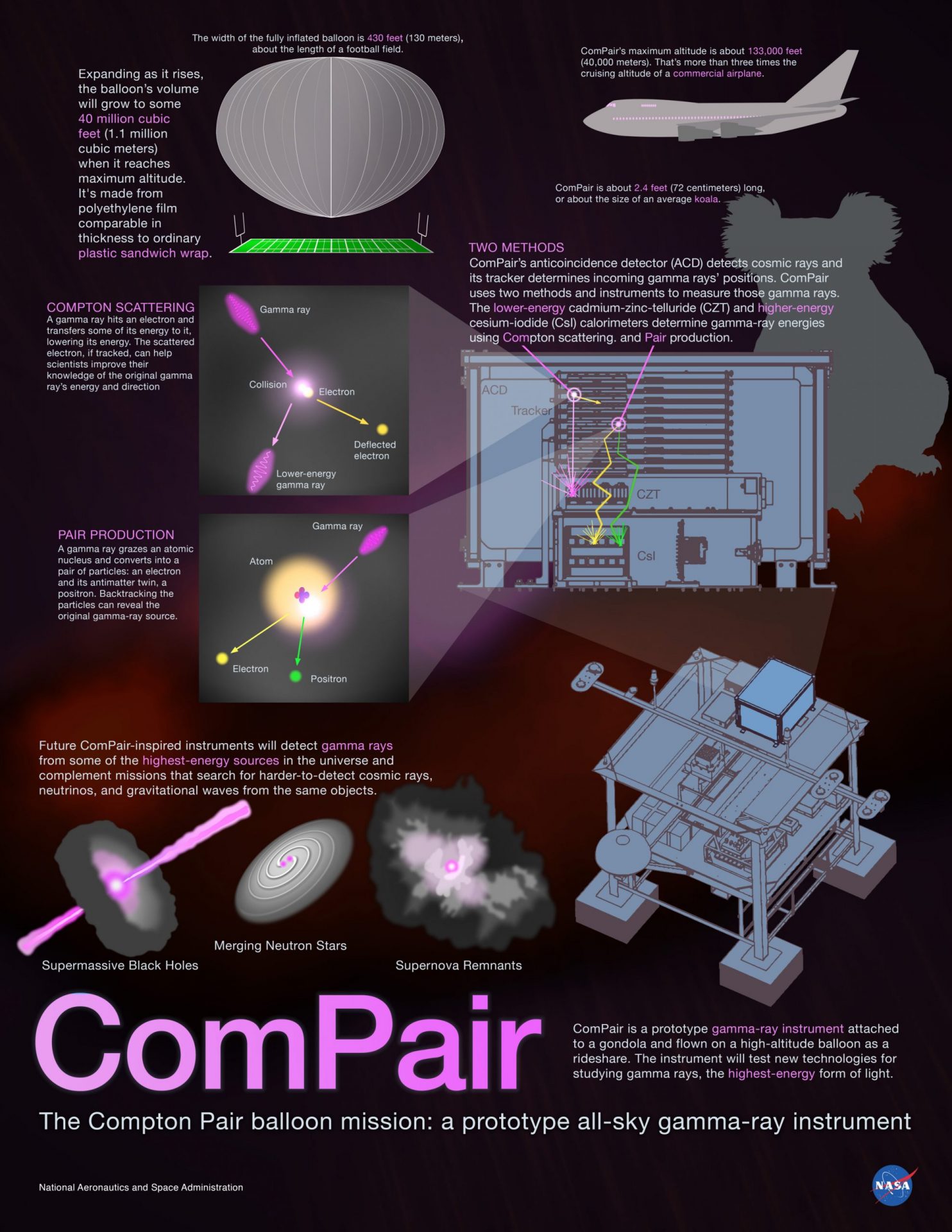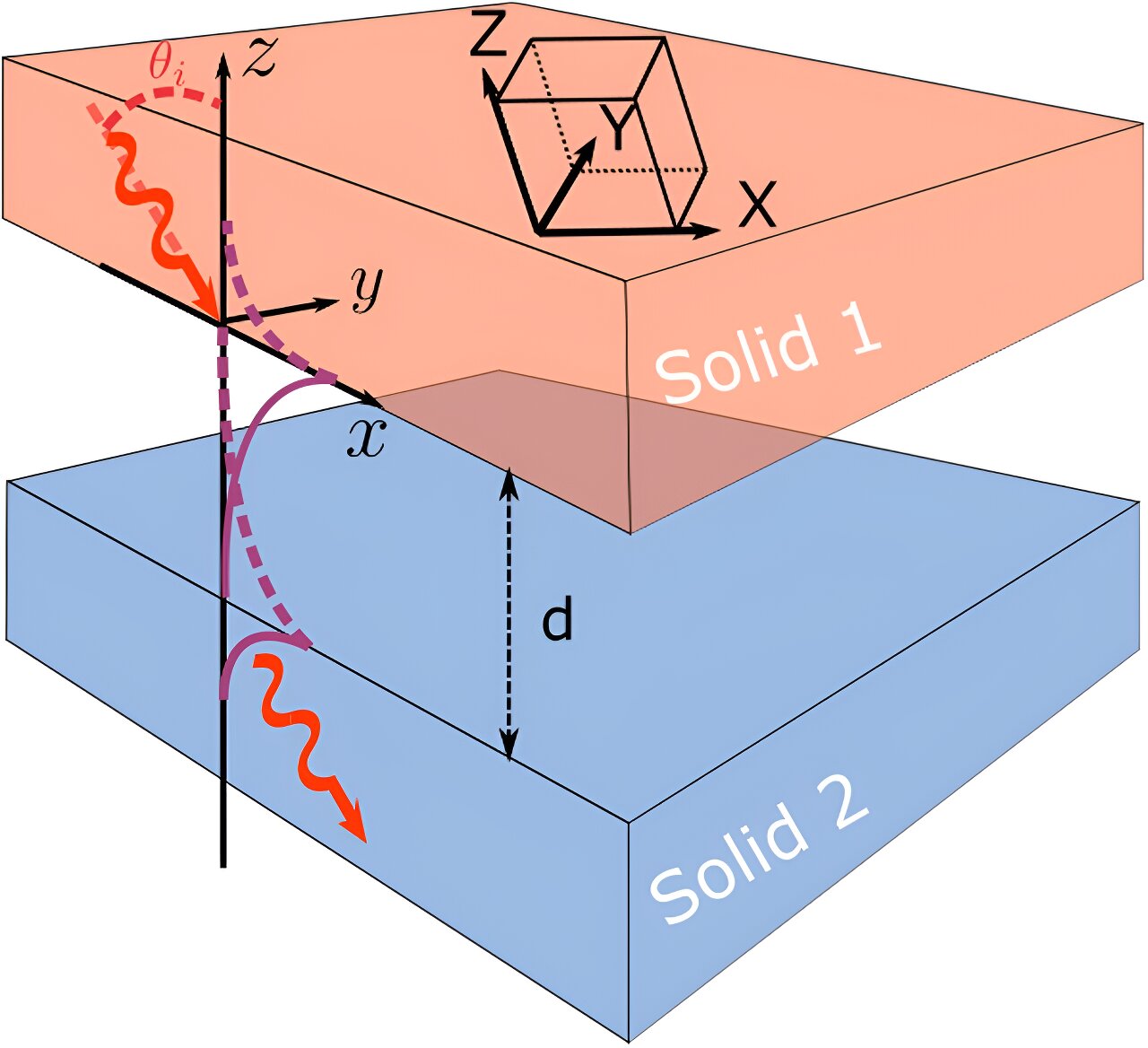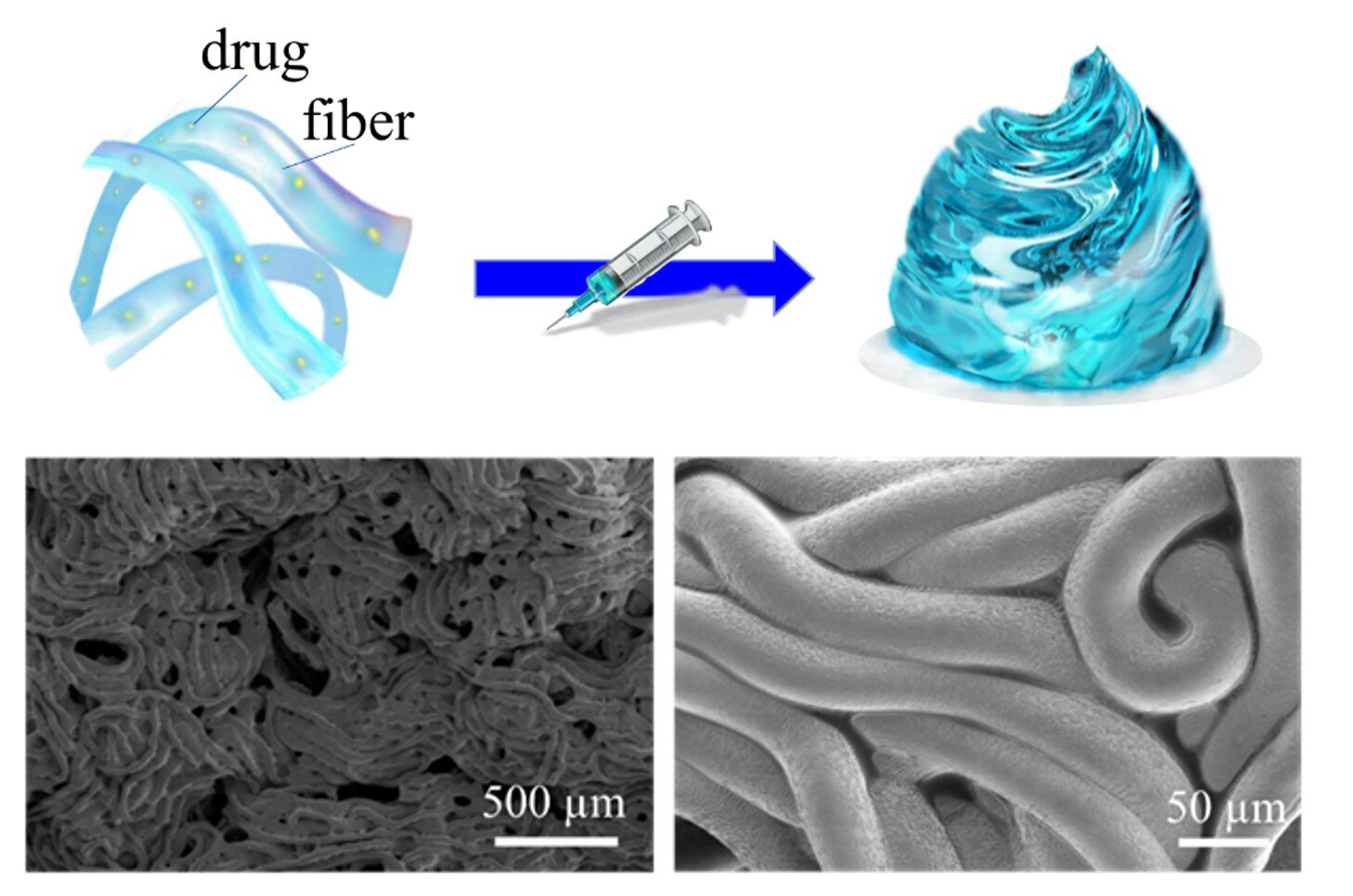A team in Fort Sumner, New Mexico, is getting ready to embark on an exciting mission. They will be flying a balloon-borne science instrument called ComPair, which aims to test new technologies for detecting gamma rays, the highest-energy form of light.
ComPair is scheduled to take flight during NASA’s 2023 fall scientific balloon campaign, starting on Thursday, Aug. 10, weather permitting.
“Lots of interesting science happens in the energy range that ComPair is designed to study,” said Nicholas Kirschner, a graduate student at George Washington University in Washington and NASA’s Goddard Space Flight Center in Greenbelt, Maryland, who is part of the mission. “These gamma rays are difficult to capture with current methods, so we need to create and test new ones. ComPair’s flight brings us closer to deploying a similar detector in space.”
ComPair is capable of detecting gamma rays with energies ranging from 200,000 to 20 million electron volts. To put that in perspective, visible light falls between 2 and 3 electron volts.
This energy range is where supernovae and gamma-ray bursts shine the brightest. It’s also where astronomers expect to observe the strongest glow from massive and distant active galaxies powered by supermassive black holes. However, current missions do not cover this range effectively, so future instruments inspired by ComPair could fill crucial gaps in our knowledge.
Testing new gamma-ray technologies is challenging due to Earth’s atmosphere filtering out most high-energy radiation from space. ComPair’s solution is to fly to an altitude of about 133,000 feet (40,000 meters) on a scientific balloon, which takes it above 99.5% of the atmosphere.
After being built and tested at Goddard, the ComPair instrument was shipped to Fort Sumner. There, the mission team unpacked, reassembled, and recalibrated it.
ComPair will be piggybacking with another mission called GRAPE (Gamma-Ray Polarimeter Experiment), led by the University of New Hampshire. Once both instruments are on the gondola, the framework that attaches to the scientific balloon, the teams can prepare for launch.
The name “ComPair” comes from the two methods it uses to study gamma rays: Compton scattering and pair production. Compton scattering involves light transferring energy to a particle, such as an electron, upon collision. Pair production occurs when a gamma ray grazes an atom’s nucleus and converts into a pair of particles—an electron and its antimatter counterpart, a positron.
“Gamma rays are too high-energy for a traditional telescope to detect—the light passes right through the mirror’s atoms,” explained Regina Caputo, ComPair project manager at Goddard. “Instead, our instrument uses layers of different elements and compounds stacked on top of each other. As gamma rays pass through the instrument, they interact with different layers depending on their energies.”
The ComPair instrument consists of four major components:
- A tracker with 10 layers of silicon detectors to determine the position of incoming gamma rays.
- A high-resolution calorimeter made of cadmium, zinc, and telluride to precisely measure lower-energy Compton-scattered gamma rays and some converted into electron-positron pairs.
- A high-energy calorimeter made of cesium iodide to primarily measure electron-positron pairs and some Compton-scattered gamma rays.
- An anticoincidence detector that detects the entry of high-energy charged particles known as cosmic rays.
“Cosmic rays are present throughout the universe—they collide with every part of Earth’s atmosphere every moment of every day. They also interact with spacecraft, including gamma-ray missions,” said Richard Woolf, a research physicist at the U.S. Naval Research Laboratory (NRL) in Washington. “Since cosmic rays are charged, they can interfere with gamma-ray detectors, including future instruments inspired by ComPair. That’s why we need anticoincidence detectors to filter them out.”
ComPair is a collaborative effort between Goddard, NRL, Brookhaven National Laboratory in Upton, New York, and Los Alamos National Laboratory in New Mexico.
NASA’s scientific balloons provide frequent and cost-effective access to near-space for scientific investigations and technology development in fields like astrophysics, heliophysics, and atmospheric research. They also play a crucial role in training the next generation of engineering and science leaders. To stay updated on the missions during the 2023 Fort Sumner fall campaign, visit NASA’s Columbia Scientific Balloon Facility (CSBF) website for real-time altitude and GPS location updates during flight.
,,








